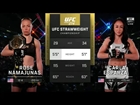With the events of UFC 175, the finale of season 19 of The Ultimate Fighter and UFC Fight Night: McGregor vs. Brandao now behind us, it seems a good time to look back upon the sport as it was a decade ago.
The year is 2004 and the sport has seen some changes of late. Tito Ortiz is no longer the champion of note at 205 and Randy Couture looks like the second coming of Henry Armstrong, partnered perhaps with James J. Braddock.
Outside of the world of MMA, Shrek 2, Harry Potter and the Prisoner of Azkaban and Spider-Man 2 dominated movie theatres across the nation while the first Saw film opened more than a few eyes. In music, Metallica released their hard-hitting documentary Some Kind of Monster and Dimebag Darrell, former lead guitarist of Pantera, was shot and killed onstage at a show while performing with his post-Pantera band, Damageplan.
Yet amid so much change, the song seemed to remain the same at the beginning of 2004.
Wanderlei Silva was still thought by many to be the most violent fighter the sport had ever seen and his detractors were still reeling from his destruction of Quinton “Rampage” Jackson in the biggest event of 2003: the Pride Middleweight Grand Prix.
In addition, fans still wanted to see Chuck Liddell fight Ortiz and Matt Hughes was still considered by many to be the best pound-for-pound fighter in the sport, poised to set new records for consecutive title defenses.
Meanwhile, when eyes turned toward Japan, many were awaiting the final resolution between Fedor Emelianenko and Antonio Rodrigo Nogueira as to who really is the best heavyweight in all of MMA.
The sport was still defined and realized by two main promotions: the UFC and Pride FC and the latter was still the bigger organization, at least on paper and sales slips.
Consider: in 2003, total attendance numbers for the two organizations showed one aspect of the advantage Pride enjoyed over the UFC.
The UFC had an approximate total number of 49,500 over five shows. Pride FC had approximately 147, 500 in attendance for just three shows: parts 1 and 2 of their middleweight Grand Prix (Pride Total Elimination 2003 and Pride Final Conflict 2003) and their year-end show, Pride Shockwave 2003. If hard attendance numbers were available for all of the Pride shows for 2003 been available, the disparity would have been shocking.
In 2004, the same tale would be told yet again, but it also pointed out one very important fact; being second-place globally was not a bad thing at all if you were first-place in America. The UFC was growing the sport, slowly and surely, one show at a time, and their aspirations were founded in reality.
Historically speaking, 2004 was the last year the UFC spent making sure the ground floor was solid. They set the bedrock firm and began erecting the scaffolding for the next level, which would be realized in 2005.
And from there, the sport would never be the same.






























